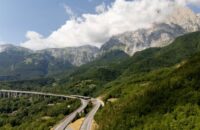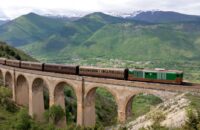June 3 marks World Bicycle Day, established in 2018 by the United Nations to spread awareness of the social benefits of using bicycles as a means of transportation and leisure. In use for two centuries, it represents a true icon of simple, inexpensive, reliable and sustainable transportation that promotes environmental conservation and benefits health.
The bicycle is one of the most convenient means of visiting and experiencing the many historical, natural and artistic wonders of Abruzzo, which, with its beautiful mountains, quaint villages and unspoiled beaches, is a perfect destination for cycling tourism. A new way to explore this region, within the reach of even the least trained, is by e-bike, a means that is rapidly becoming a trend among cycling tourism enthusiasts, because it allows them to discover, with pedaling assisted by an electric motor, historic centers, National Parks, peaks among the highest in the Apennine chain, rolling hills covered with vines and olive trees, as well as cities overlooking the sea.
The Abruzzo region has as many as 46 routes bicycle routes that cross ever-changing panoramas: pretty towns located between the sea and the mountains, immense cultural heritage and breathtaking landscapes capable of thrilling cyclists of all ages. We propose some cycle routes that you can follow to discover the countryside that opens up in the first hinterland, the roads that climb plateaus and mountains, the great tradition that is hidden in every valley, town and village.
We suggest 5 routes you can follow to discover the region’s coastline as well as the hinterland rich in history and architecture:
- The Greenway of the Trabocchi: with its approximately 42 kilometers of track that runs along the Adriatic coast in the area between Ortona and Vasto, it enabled the region to win second place in the biennial European Greenways Award 2023 for its scenography, characterized by the presence of the ancient and evocative Trabocchi, fishing machines built of wood and suspended over the sea. It winds along a highly indented stretch of coastline, rich in unspoiled coves and hidden beaches, following in its rougher sections the route of the former Adriatic railway, inaugurated in 1863 and decommissioned in 2005. It passes through 9 municipalities (Francavilla, Ortona, San Vito Chietino, Rocca San Giovanni, Fossacesia, Torino di Sangro, Casalbordino, Vasto and San Salvo) and is reserved for sustainable mobility, cyclists and walkers, ensuring an ideal route among historical testimonies and nature reserves. It is a spectacular route overlooking the sea, with an easy level, which can also be walked by children.
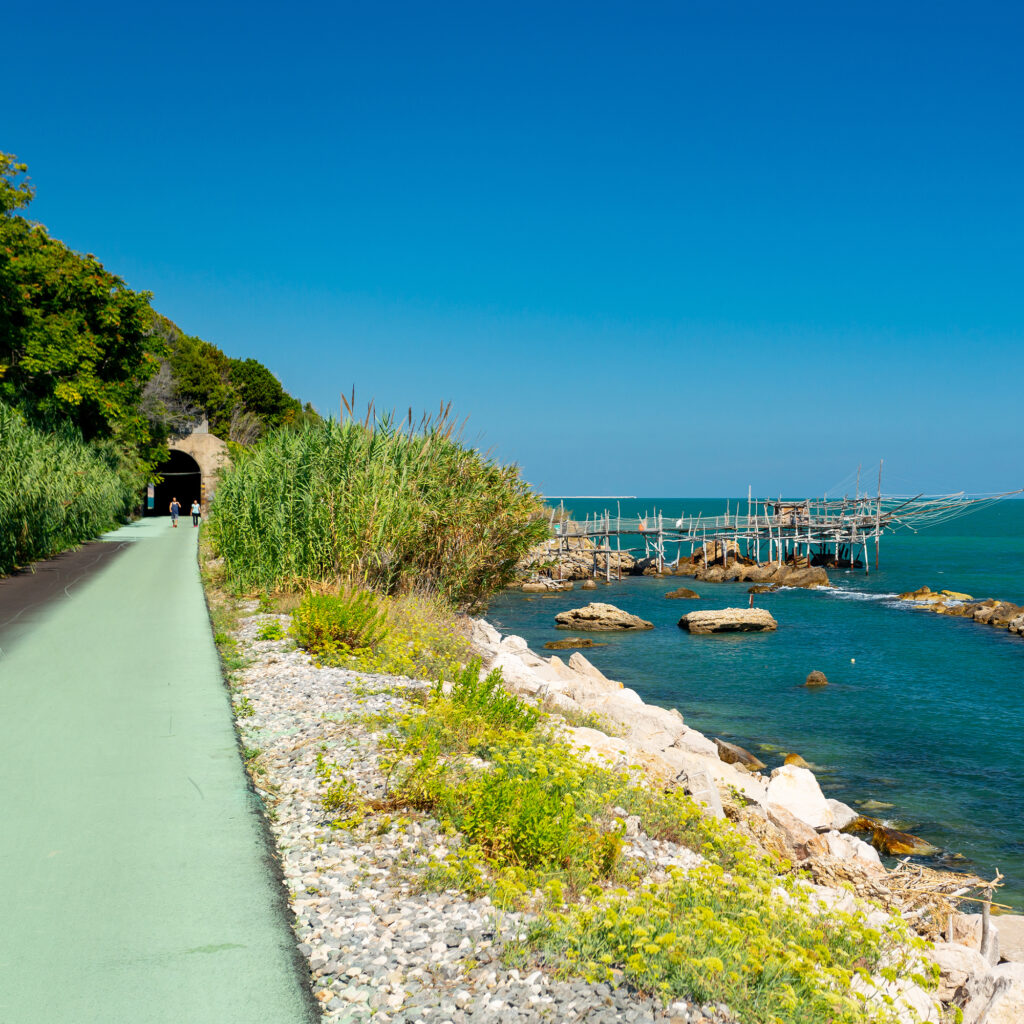
- From Caramanico Terme to the heart of the Majella Park: the approximately 43-kilometer itinerary starts from one of “Italy’s Most Beautiful Villages,” an important spa town and municipality of Lombard origin that still retains its medieval layout; it is also known for the presence of the wonderful Valle dell’Orfento Nature Reserve, in which the Celestinian Hermitage of San Giovanni all’Orfento is located. Via the SS487 you reach the small town of Salle, which was the birthplace of Blessed Robert of Salle and preserves intact its castle, in the old part of the town, as well as the charming 13th-century church of St. Thomas Becket. It is also home to Europe’s highest masonry bridge, built in the early 1950s at 104 meters above the Orta River, which is now also used for bungee jumping. We then ascend to another of “Italy’s Most Beautiful Villages,” San Valentino in Abruzzo Citeriore: situated on a hill and home to the important Fossil and Umbra Museum. Continuing the route, you will finally return to the starting point.
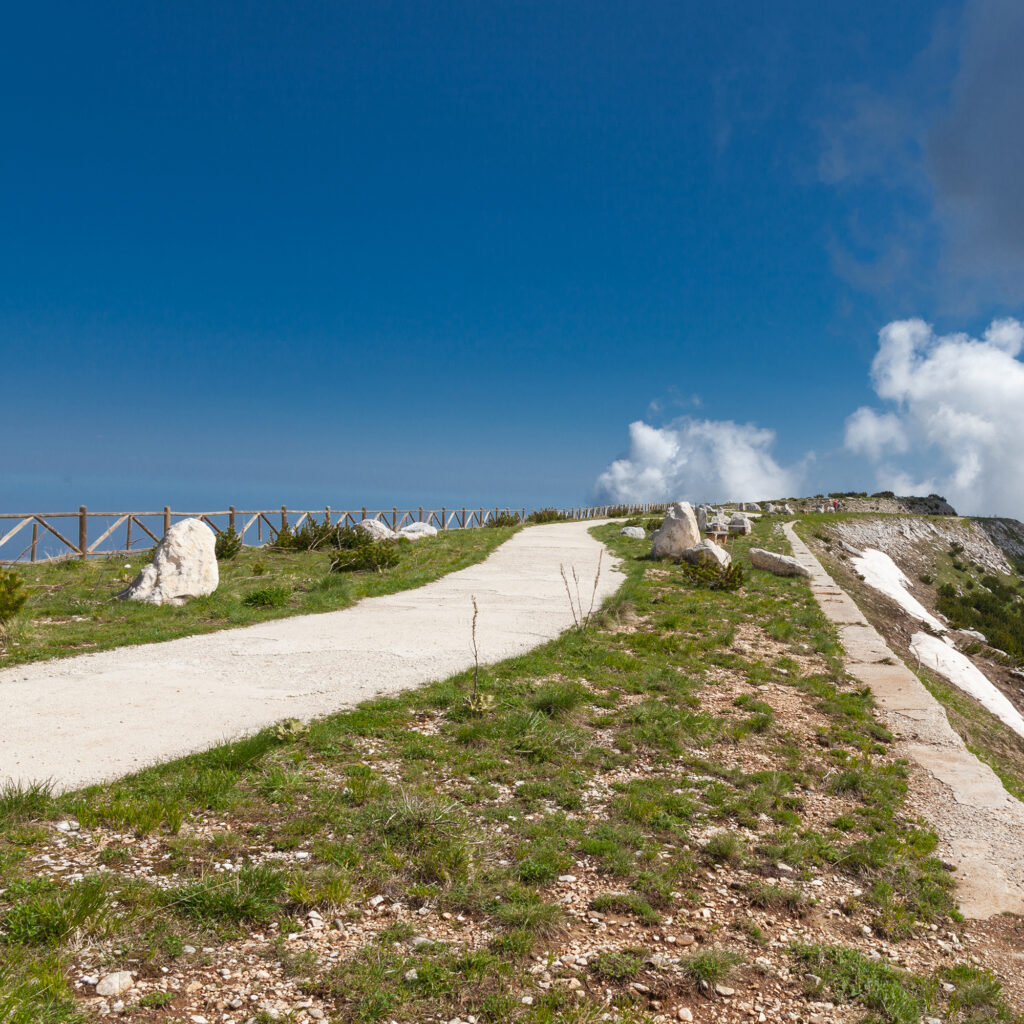
- Campli – Civitella del Tronto: with this tour in a few kilometers you will visit two of the most beautiful art towns in Abruzzo. Campli is a small town full of medieval architecture with its churches and stately palaces, you can pay a visit to the former cathedral of Santa Maria in Platea, erected as a Collegiate Church in 1935, the church of San Francesco, which already existed at the beginning of the 14th century, the Holy Staircase at the church of San Paolo and the church of San Giovanni. Also worth a visit is the Archaeological Museum in which are collected Italic artifacts and grave goods dating back to the 3rd B.C. from the necropolis of Campovalano, one of the most important centers of the Picene people over two thousand years ago. A ten-minute drive along the SS81 will take you to the splendid village of Civitella del Tronto, where the ancient fortress stands, among the largest in Italy, which was the last bastion of the Kingdom of the Two Sicilies and today offers a circular view of the mountains, hills and sea. It is a viable year-round tourist route, suitable even for the less allied.
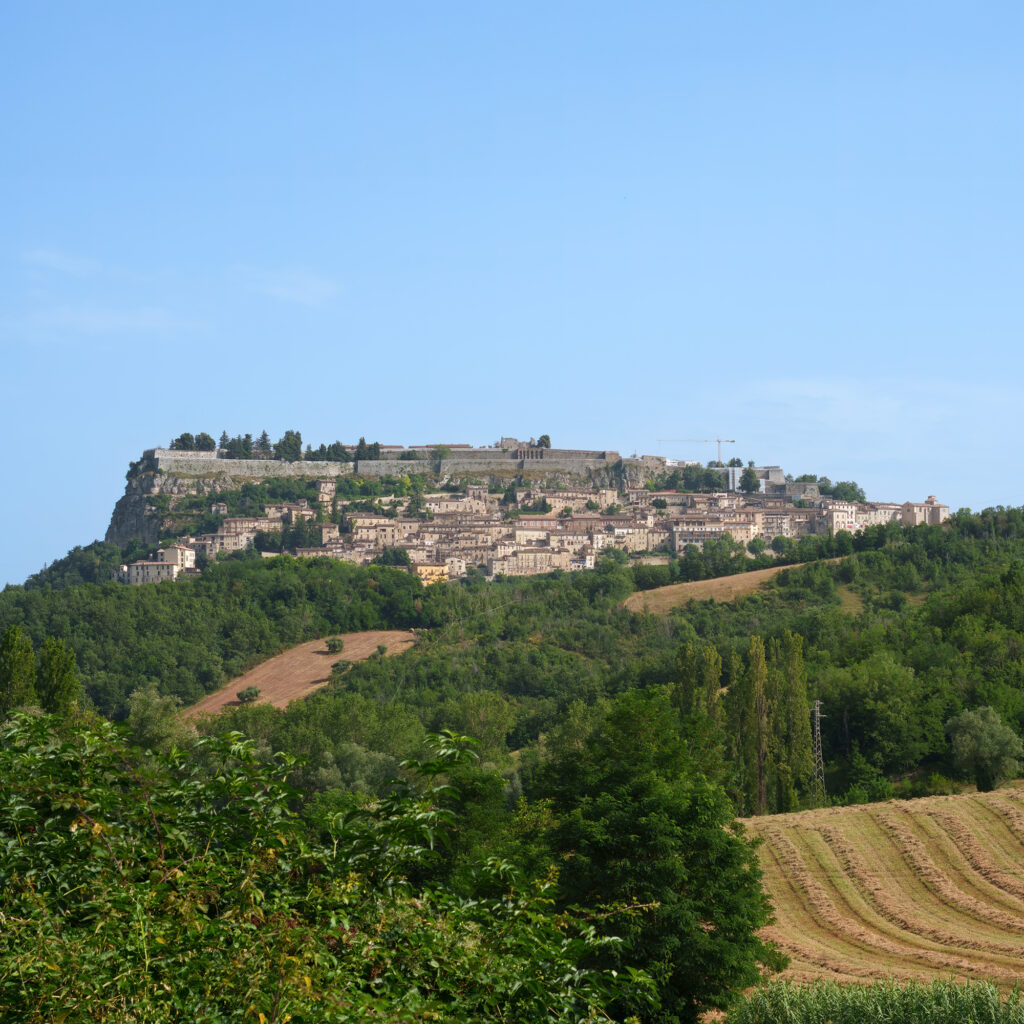
- From L’Aquila to the Campo Felice plain, amid nature and sacred art masterpieces: Cross and relive post-earthquake L’Aquila with its restored squares, fountains and historic buildings, pass in front of the Villa Comunale, continue to the hamlet of Roio, ideal for hiking and picnicking, resume the route and visit theAbbey of St. John the Baptist in Lucoli, Mo, a Benedictine monastery founded around the year 1,000, and then proceed uphill on the SS 584 immersed in the endless openings of the Campo Felice plain, regenerating body and soul and being won over by the silent views of the Sirente-Velino chain and the Duchessa Mountains. After passing the toll booth of the A24 highway, proceed along the SP1 Amiternina and, skirting the Raio stream, visit the church of San Panfilo in Tornimparte, embellished with frescoes painted by Saturnino Gatti in the late 15th century. After passing the hamlets of Sassa and Genzano, you regain the SS 17 returning to L’Aquila. A challenging tour with an elevation gain of about 1,000 meters, but one that allows you to experience the history and unspoiled nature of the Apennines. Also in Campo Felice is the Swup Bike Park , a real park dedicated to two wheels that includes 6 tracks available to enthusiasts: one for races, a more technical and slow one, a freeride one with ramps and drops and to finish, the Rock Way, a track with 400 meters of curves, carved into the bed of a stream. There is, of course, no shortage of a dedicated children’s course.
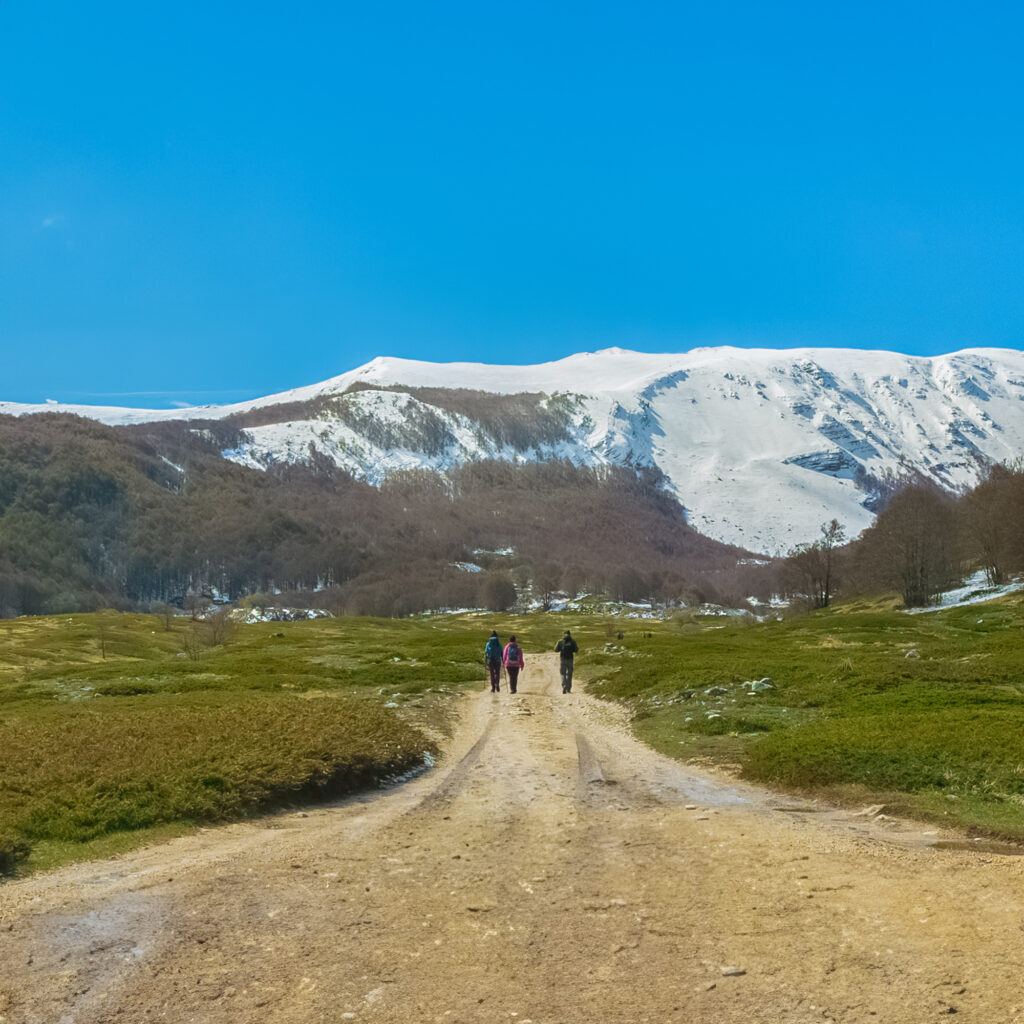
- Heart of Abruzzo by bike: starting from theCelestinian Abbey of Santo Spirito al Morrone in Sulmona, through 14 individual stages, it is possible to discover villages and territories rich in nature and traditions such as those of the Peligna Valley, Subequana Valley, Sagittario Valley and Alto Sangro, including the fairy-tale lake scenery of Scanno with its romantic heart-shaped perimeter. Or one can push on to the scenic lakefront of Campotosto, with its enchanting views of the imposing Gran Sasso d’Italia and Monti della Laga mountain ranges.
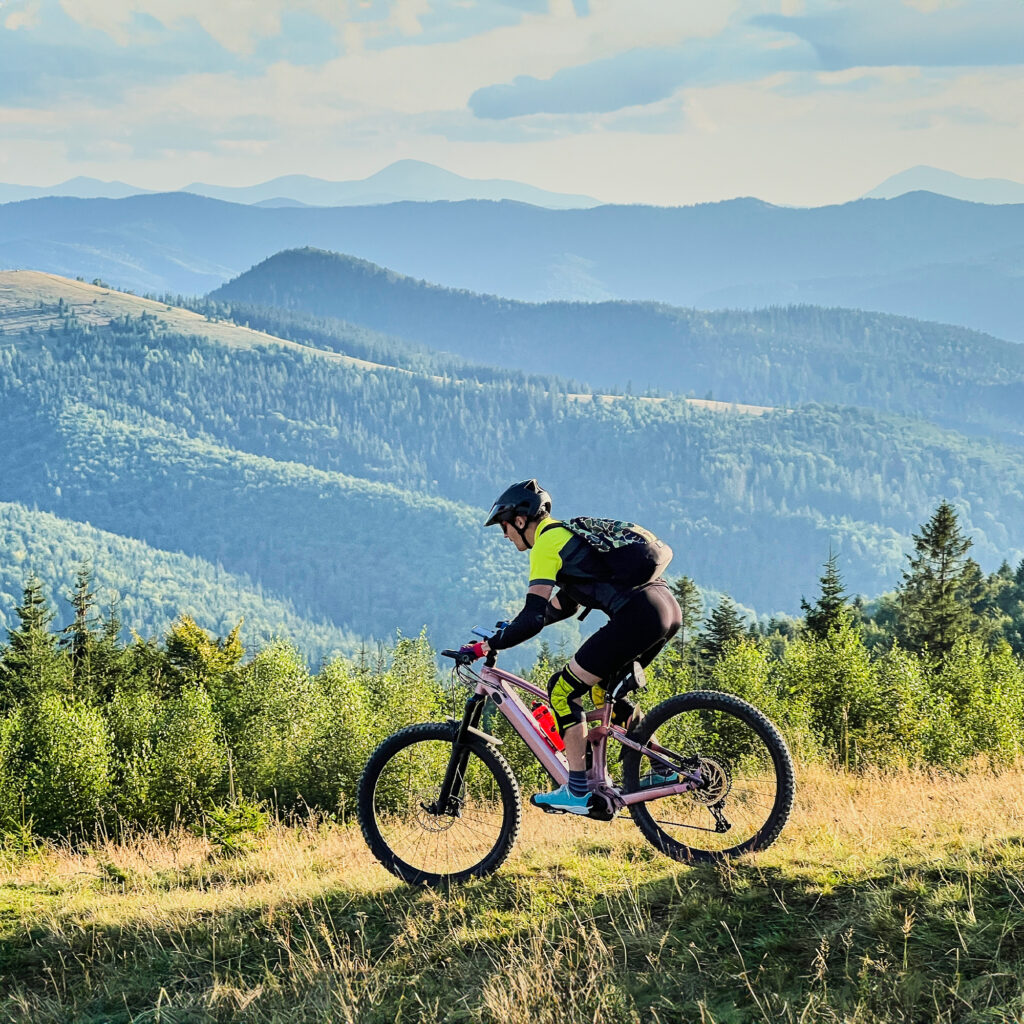
Racing enthusiasts, on the other hand, will be able to participate in some of the cycling events planned in Abruzzo:
On Sunday, June 2, Scanno will be the site of the Marathon of the Stazzi, an event that has been held since 2004 and attracts numerous bikers every year, one of the most important events on the MTB circuit, with the routes winding through the shepherds’ huts located between the hamlet of Frattura, the pass of Monte Genzana, Passo Godi and the characteristic heart-shaped lake.
Saturday, June 8, in Castel del Monte there will be the Nova Eroica Gran Sasso, an event in the heart of the Italian Apennines, with trails winding across the Campo Imperatore Plateau along the ancient tratturi, the white roads used since ancient times for transhumance of flocks.
On Sunday, June 9, the village of Mutignano di Pineto will host the Cerrano Gravel-MTB Experience, a non-competitive cycling event designed with the aim of promoting the area and its scenic, cultural and food and wine excellences through three different routes of 50, 80 and 110 kilometers.




